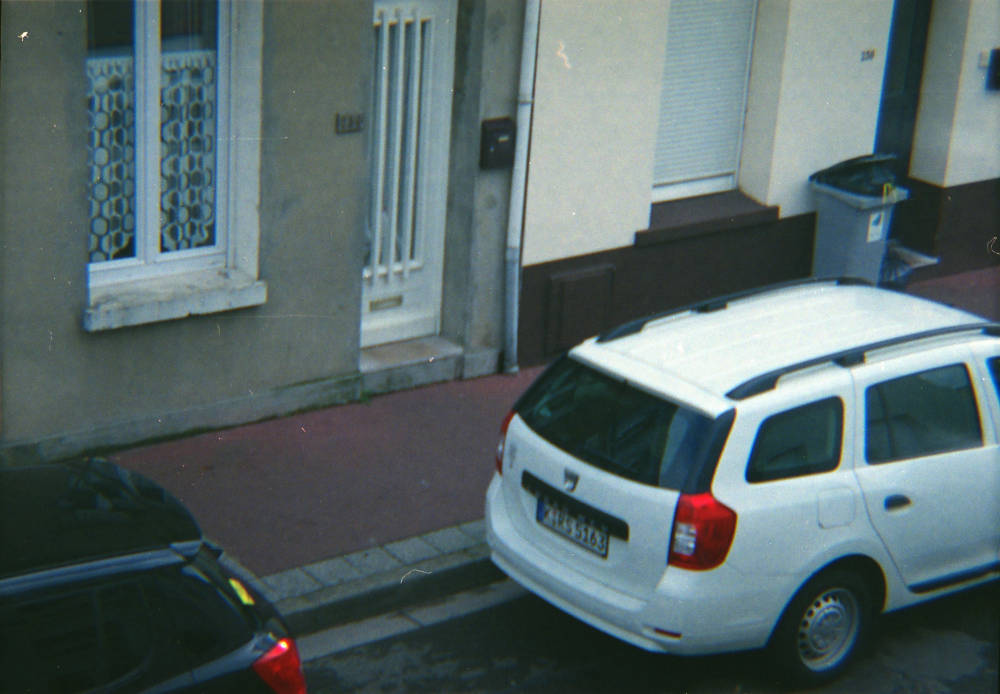Rear view. Control light on. Distance indicator on the housing. As the lowest F-stop is F8, with a guide number of 15 you can only shoot as far as 2m on 100 ISO film.
Cable release collar, cable release and instructions sheet.
Collar and cable attached. The device slides onto the lens barrel.
The movement of the cable pushes the arm that trips the shutter release.
The 35mm back, 4 frame masks and the instructions sheet.
The back open.
The 4 masks are clearly marked. A panoramic format 24x48, a panoramic format 33x48 that also exposes the sprocket area, the standard format 24x36 and a sqare format 33x34
